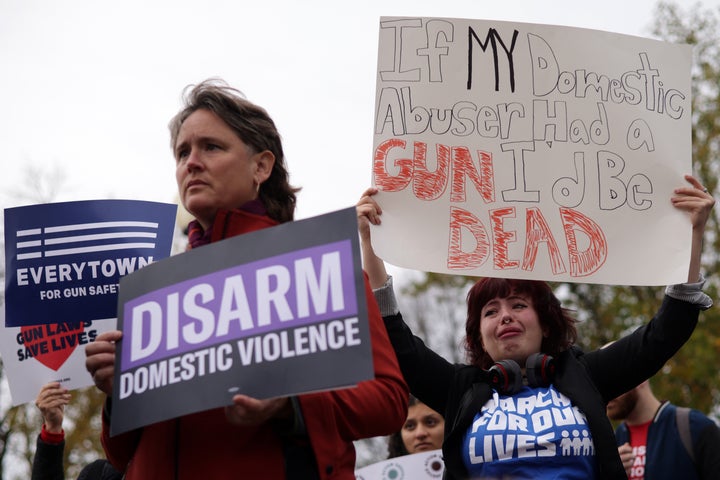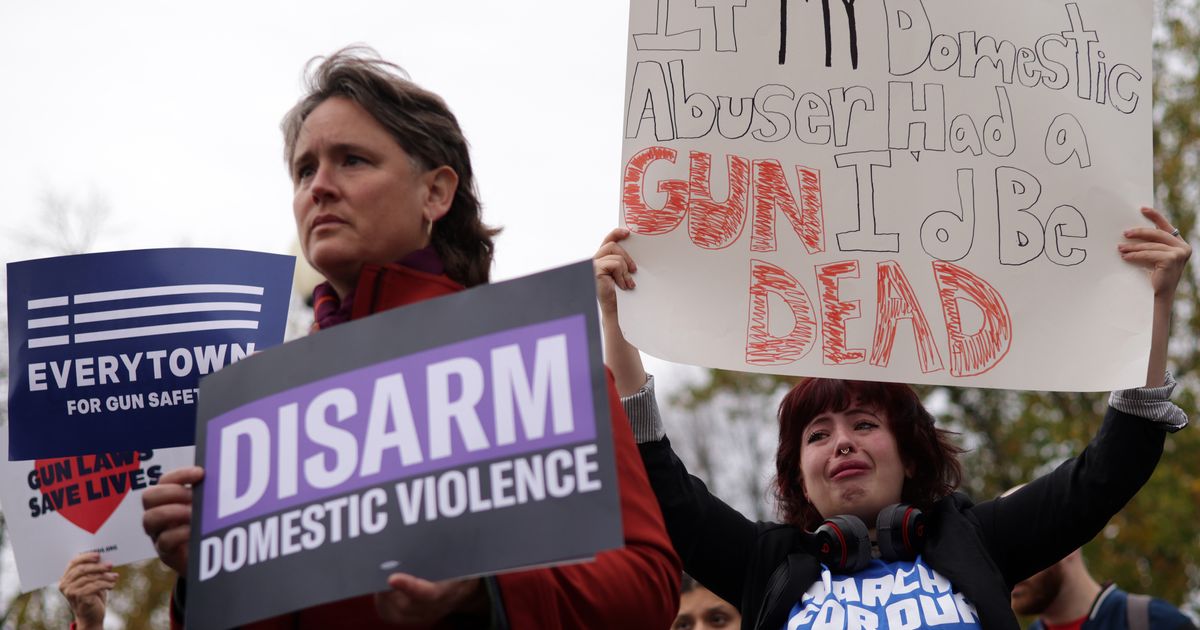The Supreme Court heard arguments on Tuesday in its first big gun rights case since it declared a sweeping test for reviewing gun regulations in 2022 that has upended decades of law and caused chaos throughout the lower federal courts.
In United States v. Rahimi, Zackey Rahimi is challenging the constitutionality of the 1994 federal law that makes it a felony for people placed under domestic violence protective orders to possess firearms. A civil court in Texas placed Rahimi under such an order for allegedly assaulting his girlfriend; prosecutors later accused him of going on a shooting rampage with guns that he was not allowed to possess.
Rahimi’s case catapulted to national attention in February, when the 5th U.S. Circuit Court of Appeals overturned that 1994 federal law — a decision critics said privileged the gun rights of abusers over the safety of their victims. It did so by claiming to apply the historical test the Supreme Court laid out in its 2022 decision in New York State Rifle & Pistol Association Inc. v. Bruen. For a law restricting gun rights to pass constitutional muster under the new standard laid out in that ruling by Justice Clarence Thomas, it had to stem from a tradition of firearm regulation dating back to some time between 1791 ― when the Bill of Rights became law ― and the end of the Civil War.
The Bruen ruling led to a flood of controversial and often contradictory decisions in which lower courts overturned or limited long-standing gun safety laws, including age restrictions on handgun purchases in Texas, a ban on ghost guns in Delaware and multiple rulings questioning elements of laws barring felons and drug offenders from possessing firearms.
On Tuesday, the federal government, represented by Solicitor General Elizabeth Prelogar, argued in defense of the law prohibiting gun possession by domestic abusers. Prelogar said lower courts, including the 5th Circuit, misinterpreted the Supreme Court’s test in Bruen by reading the requirement for a historical analog too narrowly.
Prelogar argued that Bruen did not require an “identical twin” or a “deadringer” analog. Instead of “nitpicking historical analogs” in the law ― like requiring a ban on gun possession for domestic abusers in the era of the Founding Fathers ― Prelogar said courts should look to “enduring principles” that can be found in comparable laws. And the principle at issue in Rahimi is whether the government has banned people from possessing firearms based on their “dangerousness,” according to Prelogar.
“The principle is clear: You can disarm dangerous persons. … This is an easy case,” she told the court.

Justices, including the six conservatives who signed onto the Bruen test, appeared to indicate that lower courts may be taking the Bruen ruling too far. They repeatedly pelted Rahimi’s defender, Matthew Wright, with skeptical questions. The defender bounced between arguing that the founders had never envisioned a blanket ban on firearm possession based on civil orders and intimating that the restraining order issued against his client may have violated due process — an issue that the court did not plan to review.
Wright also appeared to contradict himself, arguing that the government could not bar any group, including the mentally ill, from obtaining firearms, while at the same time contending judges could constitutionally disarm people in specific cases if they presented a clear threat to others.
Asked directly whether he considered his client a “dangerous person,” Wright said: “I don’t know what that means.”
“Well, someone that’s shooting at people ― that’s a start,” Chief Justice John Roberts retorted.
Rahimi faces criminal charges for firing guns at three separate people over a three-month period starting in November 2020 — all while he was subject to the protective order for domestic violence.
“I’ll tell you the honest truth, Mr. Wright: I feel like you’re running away from your argument, because the implications of your argument are just so untenable,” Justice Elena Kagan said. “You seem to be running away from it because you can’t stand what the consequences are.”
“The principle is clear: You can disarm dangerous persons. … This is an easy case.”
– Solicitor General Elizabeth Prelogar
Legal scholars have widely panned the Bruen ruling and its chaotic implementation, and hope the court will give more guidance on its next ruling.
Prelogar echoed those concerns Tuesday, saying that a “profound misreading” of Bruen had led lower courts to overturn a law criminalizing the obliteration of serial numbers from firearms and another barring felons convicted of serious crimes from possessing guns because they couldn’t find historical analogs.
“History and tradition confirm common sense,” Prelogar said.
Although the case will have profound impacts on the future of Second Amendment rights in America, Rahimi himself is unlikely to possess firearms legally again.
The events that led to Rahimi’s federal case began on Dec. 9, 2019, when he allegedly threw his former girlfriend to the ground, dragged her across a parking lot by the hair and tried to shove her inside a car, striking her forehead on the dash, according to state and federal court records. Rahimi allegedly shot a gun when a bystander got involved.
Rahimi’s former partner, who is also the mother of their young son, secured a protective order against him on Feb. 5, 2020. (Rahimi allegedly violated the protective order that May by approaching his ex-partner’s house in the middle of the night.) Prosecutors also filed criminal charges against him the next month for terroristic threat against a family member, assault causing bodily harm and recklessly discharging a firearm.
When police arrested Rahimi in August 2020, they allegedly discovered fentanyl. Prosecutors charged him with possession of fentanyl, too.
After bonding out of jail a second time, Rahimi allegedly went on a series of at least six public shootings between November 2020 and his final arrest on Jan. 9, 2021. He currently faces 11 criminal charges in Tarrant County, Texas, including three for aggravated assault with a deadly weapon, and one for allegedly firing a semi-automatic rifle into someone’s home.

